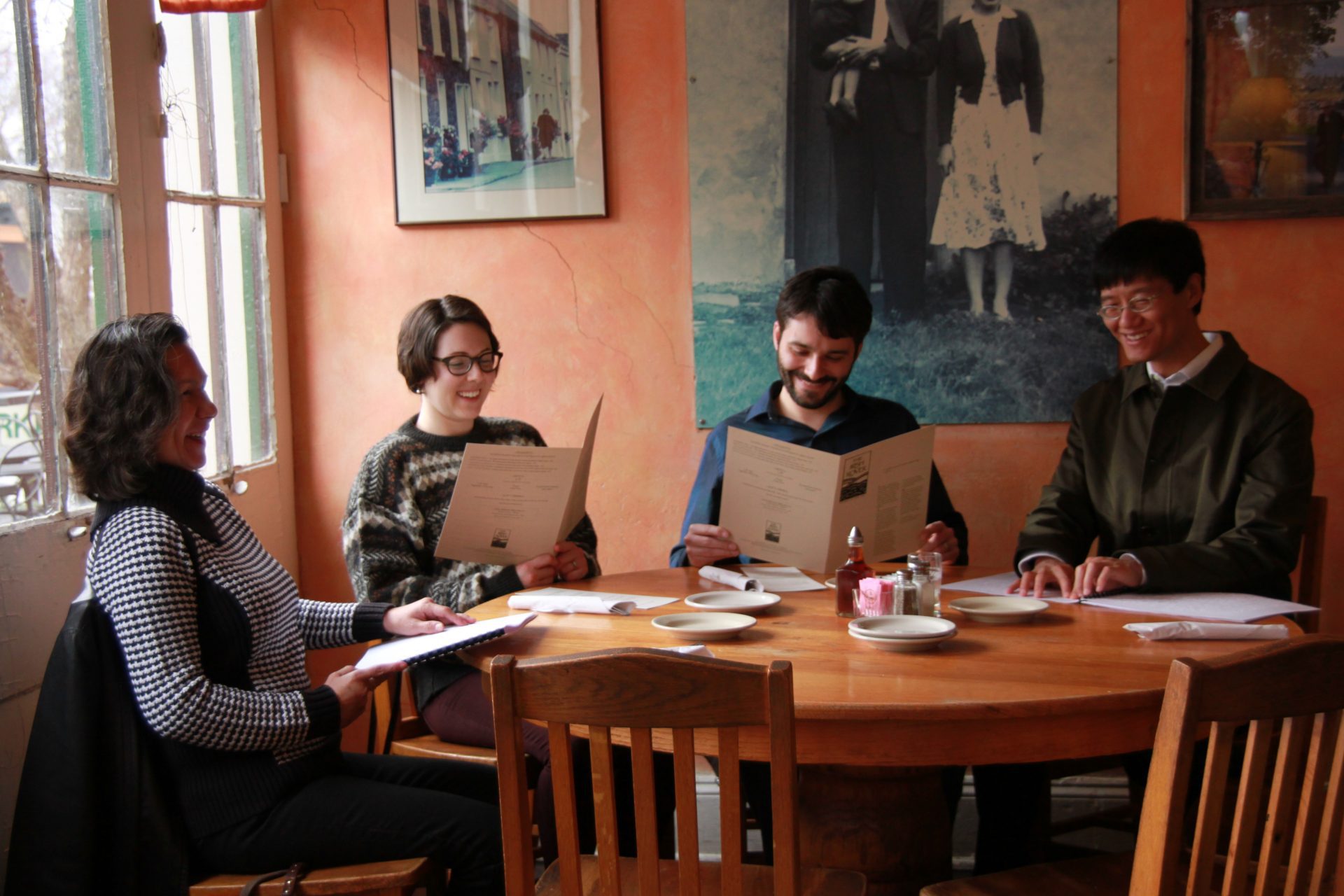Tips for Inclusive Interactions

The average sighted person probably doesn’t know how to offer O&M instruction or how to be a human guide when they meet someone who is blind or low vision for the first time. Following best practices for creating inclusive interactions ensures that you know how to engage with someone who is blind while treating them with dignity and respect. Confidently introduce yourself, offer needed assistance, and mingle in common spaces with these tips for being an ally.
General Etiquette
- Always identify yourself when you approach or return to someone who is blind or has low vision. When you leave their side, also let them know. In a group setting, say the individual’s name when you speak so they know you are talking to them.
- Pointing/gesturing or using words like “over there” is not helpful. Try saying, “The door is about ten feet ahead on your left.”
- You can also offer to help guide them to their destination.
- If you see an obstacle near someone with a visual impairment, calmly warn them. For example, say, “There is construction up ahead. I would suggest going back the way you came or crossing the street and going around it.”
- Communicate, communicate, communicate. Let the individual know if you are reaching around them to place something in front of them. Tell them where it is and what it is. Use directional terms (left, right, front, etc.) or clockface directions (“Your drink is at 3 o’clock.”).
- If you are eating at a restaurant with someone, ask them if they would like guidance regarding the food on their plate. Don’t assume they want this assistance. If they accept, describe their plate in terms of a clock face. Things at the top of the plate are at 12 o’clock. Things at the bottom of the plate are at 6 o’clock, and so on.
Guiding Individuals
- Ask the individual if they would like a guide/help. Never force it.
- Never grab or hold an individual’s hand. Ask how they would like you to assist with guiding.
- If they decline a guide but would like you to walk with them, walk alongside them but a few steps ahead.
- If they say they would like a guide, touch the back of your hand to the back of theirs. This helps them to find your arm. They may have a preferred side. Depending on your height difference, they may choose to grab your forearm, shoulder, or elbow.
- You will be able to feel if they would like you to go slower (you will feel some resistance or pulling) or faster (you will feel some pushing forward).
- As you move, the individual will find a position one step behind you and to the side.
- If you must walk through a doorway or tight space, communicate that it is a tight space or a doorway. If it is a doorway, try to let them know what side the door is on. This lets them know how to help you through the door.
- For tight spaces and doorways, put the hand of your guiding arm behind the small of your back. This tells the individual to move behind you so that you both can fit through the space.
- Ask if the person would like to use stairs, an elevator, or an escalator. Most individuals are very comfortable with stairs.
- If using the stairs to get to a destination, ask the person you are guiding if they would like to use the railing. Most individuals who are blind or have low vision do not count steps. Not all individuals will use the railing.
- If the person you are guiding wants to use the railing, bring the individual to the rail. Place your guide arm hand on the railing and let them know that your hand is on the railing and the direction of the stairs. They will slide their hand down your arm to find the railing. After the stairs, you can start to guide again.
- When you reach their destination, ask if they would like any other assistance. If you have helped them find a doctor’s office or other space with a waiting room, ask them if you can help them find an open seat. They may decline and either request an alternative or thank you for your help. If they would like a seat, bring them to an open chair and place your hand on the back of the chair. Just like the stairs, they will run their hand down your arm to find the back of the chair and seat themselves. Try to tell them if there are people seated with them.
- When guiding someone that uses a guide dog, offer to guide on the opposite side of the individual from the dog. They may ask you to guide from next to them or they may choose to have you walk in front of them and have the dog follow you. The individual is responsible for their dog. However, you need to remain aware of the width of your group as you move toward your destination.
- If the guide dog handler asks you to walk behind them, walk behind the shoulder opposite the dog (usually behind the right shoulder) so as not to distract their guide dog.
Guide Dog Etiquette
While guide dogs are amazing and adorable creatures, when they have a harness or vest on, they are working. It is important for the working team’s safety that people do not engage with them while they are working.
Please do not:
- Feed or give treats
- Touch or pet the dog or their harness
- Talk to the dog
- Make eye contact
- Give directions or commands to the dog
Visit aph.org to learn more about the resources we offer to help break down barriers.
